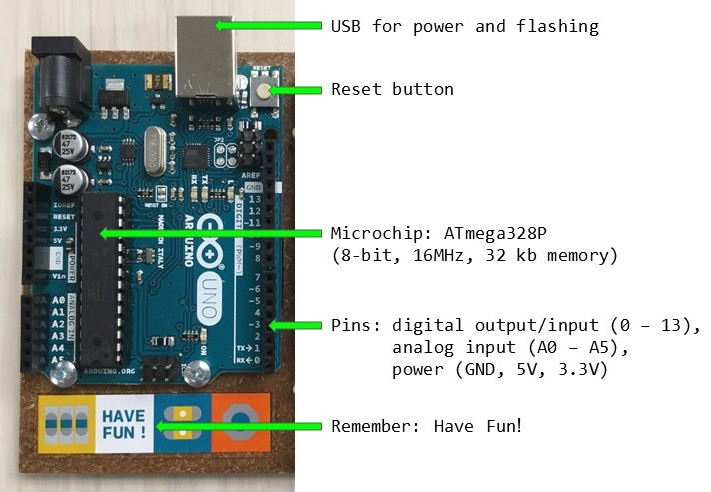1.0 - Introducing Arduino UNO
Meet your microcontroller!

Arduino UNO is an easy to use prototyping board based on open-source hardware and software. It can be programmed using Arduino’s basic language to create interactive physical computing projects.
“Arduino was born at the Ivrea Interaction Design Institute as an easy tool for fast prototyping, aimed at students without a background in electronics and programming. “ – Learn more from the Arduino Guide
For examples and inspiration check out the Project Hub.
1.1 - Breadboard
That white thing attached to your UNO? Its a solderless breadboard!

Breadboard make it easy to create circuits without soldering any wires together. The connection is made by inserting wire into the tiny holes:
- Each pin hole on a
Railis connected vertically. - Each pin hole in a
Rowis connected horizontally. - A
Splitruns down the middle dividing the board in two.
Inputs & Outputs
Arduino is designed to make interactive projects. This means it uses sensors to get input from the world, and responds by controlling actuators / outputs. Uno does not have any built in sensors or actuators, you connect them to the boards pins.
Example sensors:
- button
- potentiometer (dial)
- temperature sensor
- accelerometer (motion sensor)
- photoresistor (light sensor)
Example outputs:
- LED (light)
- piezo buzzer (sound)
- Servo motor, DC motor (motion)